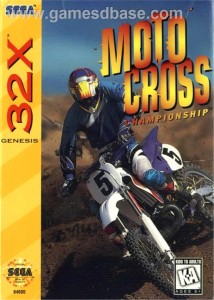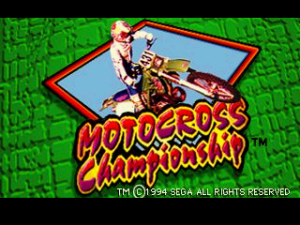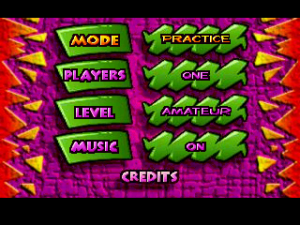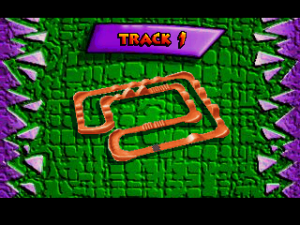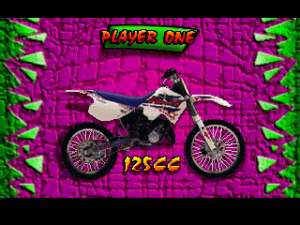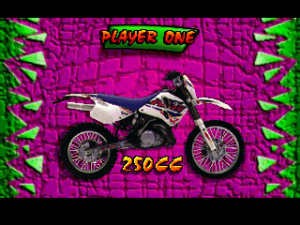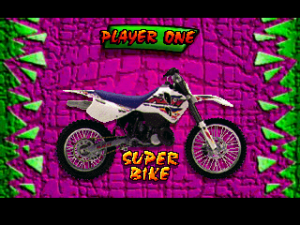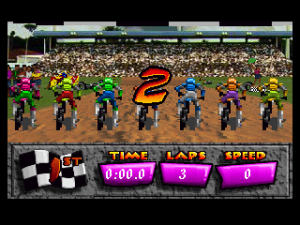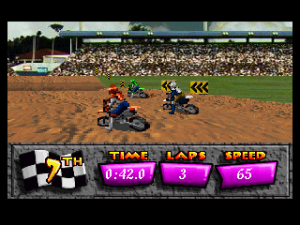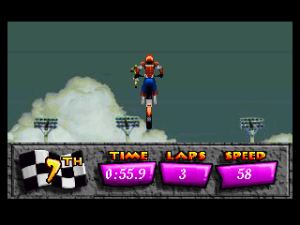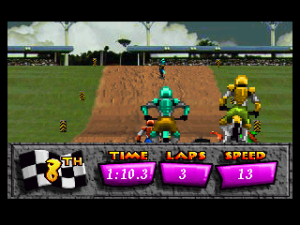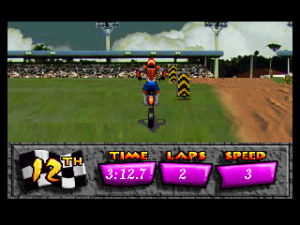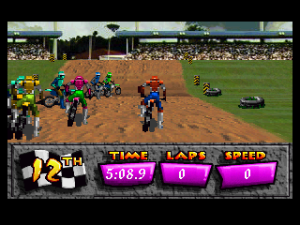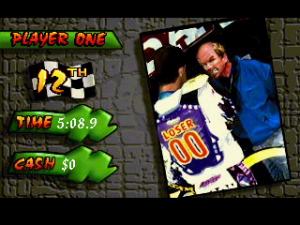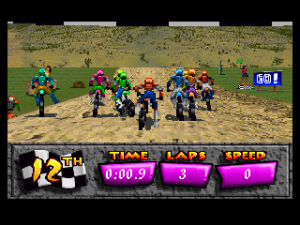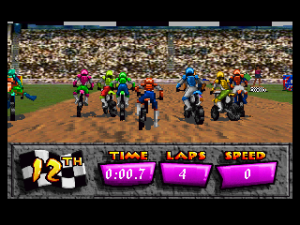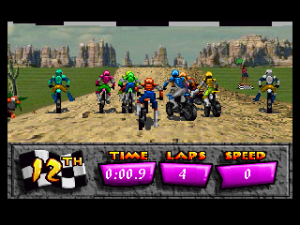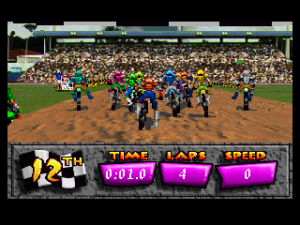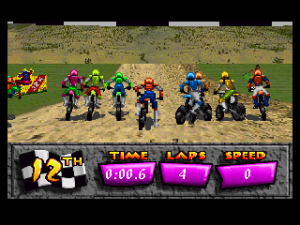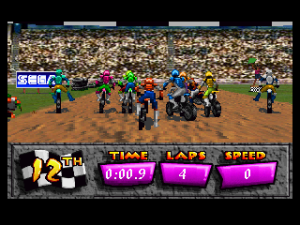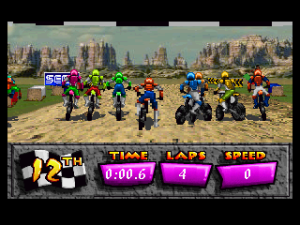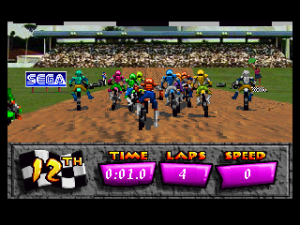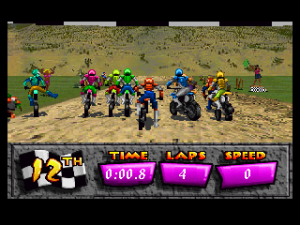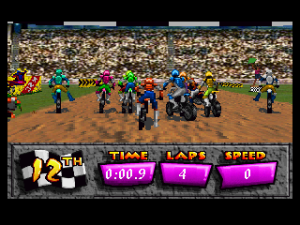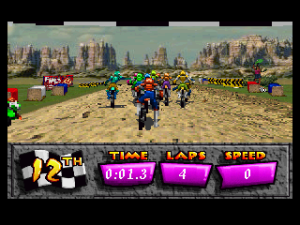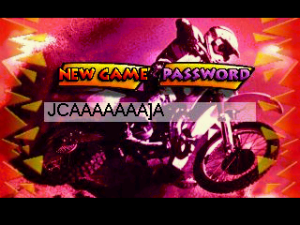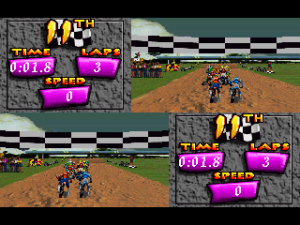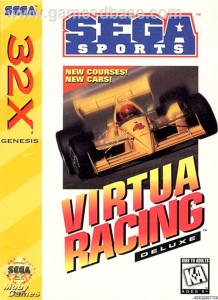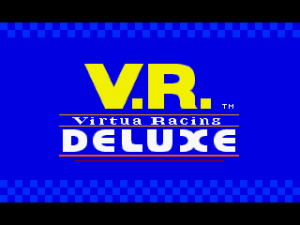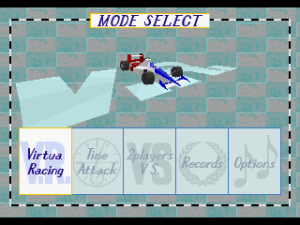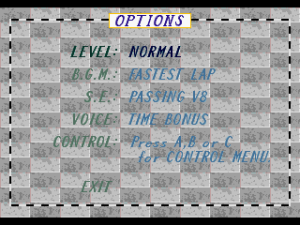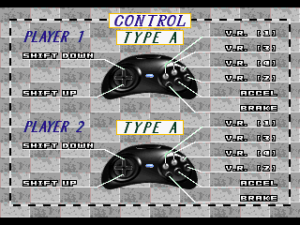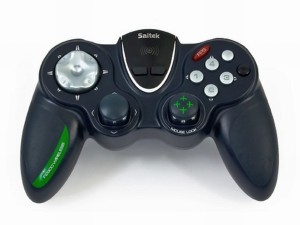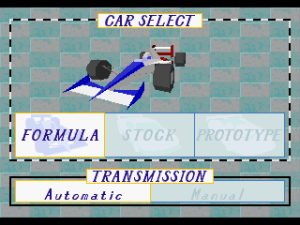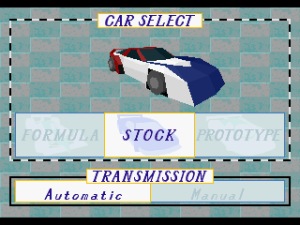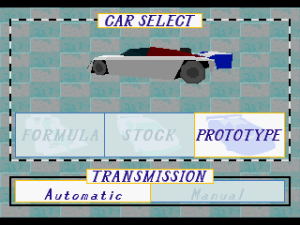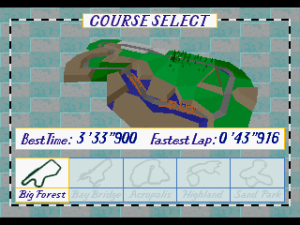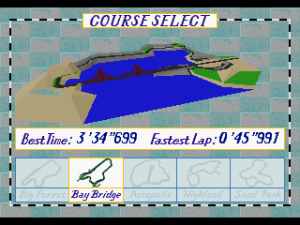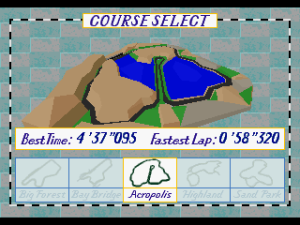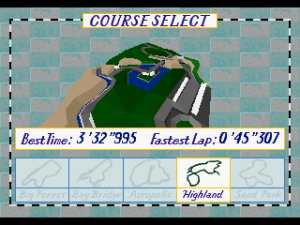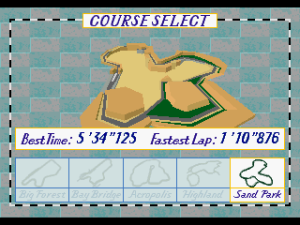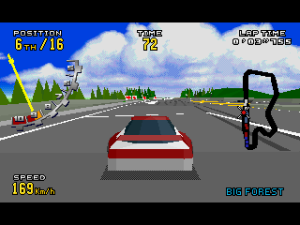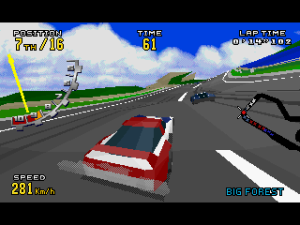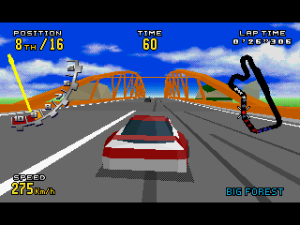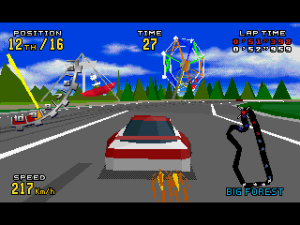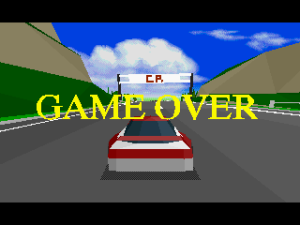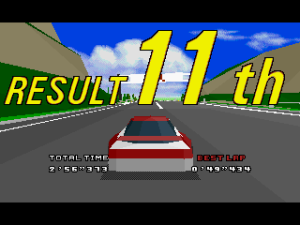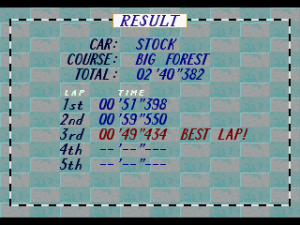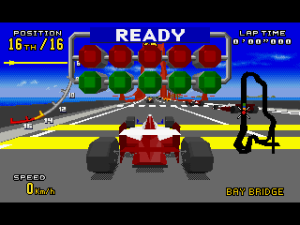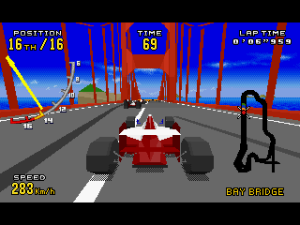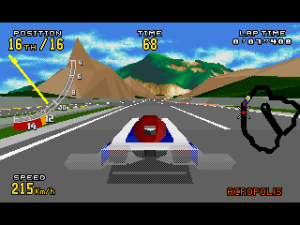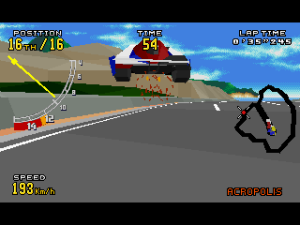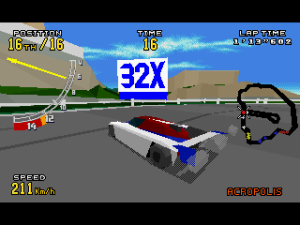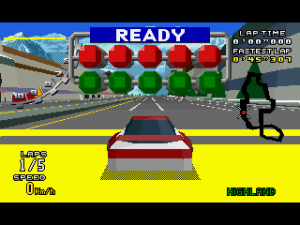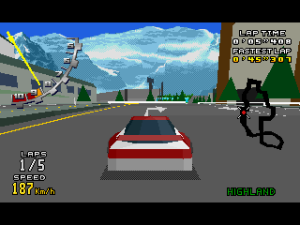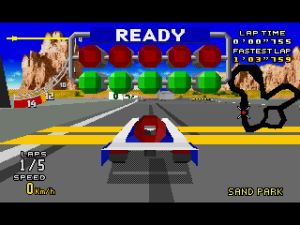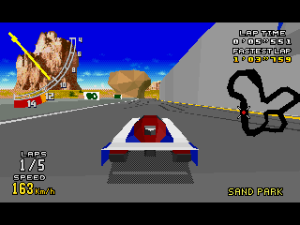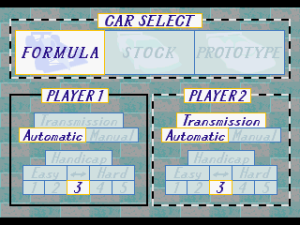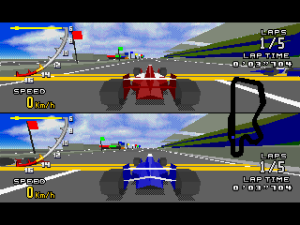When I think of the 32X, I almost invariably think of it as one of the reasons that the Saturn failed. Lesson: If you fuck over your game developers and your customers, you might jeopardize your future endeavours. And since the 32X was dead on arrival and given only token support, its game library is small and bad. There are gems like Kolibri, but most 32X games just didn’t need to exist, much like the addon itself.
The 32X – which was sold as the poor man’s 32-bit console right from the get go – was always going to have a problem living up to its hype. Game studios were under pressure to release games in a hurry for this system. If you’ve played 32X games, you’ll know what I mean when I say that this is obvious. Some developers even complained that they were being pressured to release games that were unfinished, and that they would have liked to spend more time fixing and polishing them.
Needless to say, the hardware’s true capabilities were never realized or pushed like they were with the NES or the Super Nintendo. The 39 games released and the pitiful price cuts soon after North American release as people waited for the Saturn were what most people recalled of Sega’s single biggest blunder. Those and mushroom jokes.
Motocross Championship (1995)
This is one of those 32X games that is clearly unfinished. It’s a dirt bike racing game with elements of combat lifted from Road Rash.
This brings up an interesting question. Would this game have been worth finishing? Let’s take a look at what was released.
Here we have the options screen, which allows you to choose from the practice or season modes of gameplay. I saw almost no difference between these two. You can also choose from a single or two-player game, and amateur, expert or pro difficulty level. And from here you can turn the music off. Unless you like cheesy “rock” music played with synth-guitar sounds and synth-keyboard sounds and synth-drum sounds that are like something Zack and his ’90s hair would unconvincingly flail to on Saved by the Bell.
There are twelve tracks to choose from, and they offer a wide variety as far as the turns and terrain are concerned. I’ll be racing this first track for this review.
You can also choose to race with one of three bikes. There’s this one…
…this one…
…and this one. Damned if I can tell a difference in gameplay between them.
And here we are at the start of the race. Have you noticed those black bars at the top and bottom of the screen? Those aren’t a good sign. It means the developer wasn’t able to satisfactorily use the entire screen area to display everything and have the game perform properly. And this game really doesn’t look all that much better than a standard Sega Genesis racing game.
One thing you will want to do if you give this game a try is to avoid starting the race right away. The start of each race is an absolute clusterfuck. All the AI racers mash together and collide, leaving a mess of fallen bikes and riders that takes about 10 seconds to clear up. This happens at the start of every race. You can avoid it if you hang back for a while and start while turning sharply to the right or the left.
While I’m talking about collisions, I’ll mention how bad the sound effects are. I think the game studio only recorded one guy saying “Hey!”, and they use this clip for every single collision or hit. The bikes also sound like blocks of wood hitting each other when they collide. I have heard more realistic sound on a Commodore 64. I’m not exaggerating.
This is the point where you can really see how unfinished “Motocross Championship” is. When you catch some decent air off a jump, you get a view past what the developers had rendered, and the rest is just solidly filled colour. Sometimes, that’s all you can see. And because the racing view is so small, it takes a long time before you can see the track again when you jump. Often when you land, you crash right into the barrier along a turn that you should have made somehow in the air.
The constricted view makes it very hard to keep track of your racer too. The 32X’s improved processing capabilities allowed for more racers on the screen at one time compared to standard Genesis games, but with the sprites so big and the view so small, your own rider is so easily blocked or lost in the shuffle.
And how ’bout that Road Rash style combat? It isn’t anything special. I thought I’d really enjoy this game because of that, because Road Rash is among my favourite game series of all time. All you can really do in this game is punch the riders beside you. It’s satisfying to see them get knocked down when you do land a hit, but that’s rare. The jumps are so frequent that you’re hardly ever in a position to be beside any other biker long enough to punch them. This game is such a mess visually and the frame rate so choppy that it’s really impossible to tell if you’re actually “beside” another biker anyway, so the combat becomes a case of mad button mashing and occasional hits.
And then there’s this bug. Sometimes if you get off the track for whatever reason, it can be very hard to steer back onto it. I just couldn’t seem to steer my bike right from this point.
Here I am at the end of that race. This game is odd in the way it displays the laps. It counts them down and shows you how many laps you have left to go. It’s as if it knows that you’re wondering how much more of this you have to take.
Ha ha. Loser. I get it. Well, bald version of Zack, I’m boning an imaginary version of Tiffani Amber Thiessen. Top that.
This is exactly what happens in the season version of the game too, so I think that maybe the practice version was supposed to actually be a practice solo ride that wasn’t finished in time. Who knows.
Here are some views of the other tracks. You can see that there is a bit of variation in the scenery, but that it does repeat after a while. This is track #2.
Track #3
Track #4
Track #5
Track #6
Track #7
Track #8
Track #9
Track #10
Track #11
Track #12. Normally, I would love a game like this, as I’m very fond of motorcycle and dirt bike racing games. I would have a blast playing through each track just to see what it offered and how the scenery looked. I’m not going to bother with this one, just because the gameplay is so bad and the flaws so numerous.
Here’s the only difference I found in season mode. A password screen.
And here’s the two-player version. I honestly thought that the normal view of the screen had been squished down enough so that they could have easily fit two of those stacked in one screen and done it that way. Nope.
Well, this is a disappointment. To answer my question above – no. I don’t think this game would have been worth finishing. A total restart from scratch would have been a better idea, but while we’re talking about better ideas, why make a game for the 32X at all when we all know that Sega’s real 32-bit console the Saturn will be out soon?
Great idea, wrong system. Check it out if you like disappointment or Saved by the Bell.
Virtua Racing Deluxe (1994)
This game is a reason to own a 32X, or to spend the minutes downloading an emulator and the ROM file.
From what I’ve read, it’s a pretty faithful port of the arcade original. The “Deluxe” part of the title comes in when you consider that this game was also released for the Genesis. That version employed a trick that Nintendo had used to such stunning success in the mid ’90s. Sega stuck an extra processor into the game cartridge to give the Genesis some polygon rendering capabilities it didn’t otherwise have.
It’s too bad that Sega didn’t stick to this strategy and just include chips like this in games instead of releasing half-baked and disastrous addons like the 32X. I’ll always wonder how much less of a bomb the Saturn would have been had Sega not fucked everyone over with the 32X. But that’s another story.
There are three ways to play “Virtua Racing Deluxe”. You can play the standard arcade version (which is what I’ll show in my review), time attack mode, or two-player mode. The arcade version will get a full explanation below. Time attack is just you racing alone on the track of your choice with the car of your choice trying to better your time. This is a good mode to start with if you want to get a feel for the game or familiarize yourself with the tracks. And of course 2 player is when you want to marvel at a piece of video game history with a friend.
Among the options are the ability to choose from three difficulty levels and different controller configurations. You can also preview all of the sound and music that is used in the game from this screen, but you can not adjust or turn off any sound effects or music. I personally don’t care for music when I race, and I’m a little disappointed that I can’t turn off the music here.
This game does its music a little differently than other games. Instead of a continuous soundtrack of tunes all the way through a race, you only hear a few bars of upbeat music after you start or make it to a checkpoint. It’s used kind of like punctuation. It gets on my nerves after a while, but I prefer to race without any music at all.
Here is the controller setup screen, showing the default controller setup. When I played this game – as with most 8-bit and 16-bit racers – I got button fatigue after holding down that B button for most of the race. This is pretty much the way you had to play if you had a Genesis and a 32X, but I played this on an emulator, so I was able to take advantage of my Saitek controller and it’s extra analog stick.
What I did was to map the Genesis controllers like I usually would, except I used the right analog stick for A and B. Then I hit the “analog” button on my controller so that the left analog stick takes over direction control instead of the D-Pad. This way, the right stick forward becomes accelerate, and pulling back becomes reverse.
This is a method of control that I have only seen natively on certain PlayStation games. I’ve found it to be very comfortable for long stretches of racing gameplay. It’s easy to switch the button layouts with most emulators I operate so that I can play them this way too, and I think that’s a definite benefit of emulation over real hardware.
Back to the game. You can choose to race with one of three different cars in this game. The first choice is a Formula One car.
You can also make this a stock car race.
Or, you can race with the “prototype” cars. I had lots of fun with all of them, but I do like stock car racing games the best. That’s what this review will show.
After you choose your car, you need to choose a track. There are five available. The first is “Big Forest”.
Next is Bay Ridge…
Then Acropolis…
Then Highland…
And finally Sand Park. They’re all pretty challenging, and they all look pretty decent considering the year this game came out and the state of 3D polygon rendering.
When you have made your choice, you start your race. Sometimes you start in your pit, and sometimes you’re counted in by lights. I’m not sure if there’s a rhyme or reason to that.
Speaking of the pit crew, you can make a pit stop whenever you come to that point on the track, but I don’t know if it’s necessary or not. I have a sneaking suspicion that it is on some longer races with more laps, but again, I don’t know for sure.
The racing is good and fast, and you need to be able to keep your vehicle in control. In the arcade mode, you have a timer that counts down, and if you don’t make it to the next checkpoint in time, your game is over. You must race five full laps, and I think you must finish in the top three to win. Or maybe it’s top five. I really don’t know because I haven’t been able to do it yet.
Some of the turns are pretty sharp, and you will need to learn how to brake properly while going into them to prevent your car from crashing or spinning out.
The sound effects are great, and they sound pretty realistic. The fidelity of the system isn’t all that great, but the effort behind them is certainly there.
There is a lot of detail in this game, but even still it can sometimes be hard to see the road ahead of you. The primitiveness of this game’s technology really shows in some spots. You can zoom out if you don’t think the default view shows you enough of the road. This game has four different levels of zoom that are mapped to four of the buttons on a six-button Genesis controller.
It’s also helpful to watch the map to the right. But this is also a little disappointing for me. This is one of those maps that turns and rotates along with you while your positional icon stays in the same spot. I much prefer the other kind of track map – the one that stays put while your positional icon moves around it.
And of course I couldn’t show you the “Game Over” screen without commenting on the lovely “Game Over” ditty that gets played. It’s an extremely catchy little tune, and it’s one of many that Sega would include in their racing games. Getting a game over was never so much fun before!
Well, I beat five other cars, so at least there’s that.
Race results are shown afterwards.
Here’s a look at the next track with a Formula One car. This time I’m being counted in by the lights.
There is a surprising amount of variety in the scenery for this game.
Here we see track #3 with a prototype car. These races are faster, so if you like your racing games for sheer speed, this would be your kind of race.
Here’s my prototype catching some air during a forward flip after hitting the wall. Some of those flips are crazy, but after each one, you safely drive away. The magic of the video game world!
And here’s a shot of me spinning out after getting hit from behind.
Track #4 with a stock car.
This one requires the map. The visible road all but disappears in front of you in some spots, and the next thing you see is often the wall.
And here’s a prototype race on Track #5.
These Utah/Nevada desert scenes are getting common in racing games in these reviews. They look pretty cool, so I’m not complaining. They’re also pretty realistic, I guess. Who’s gonna complain about the noise way out there?
Now here’s a look at the 2-player mode setup screen. You get to choose your style of car and your track, and you also can choose the engine type and difficulty for each player separately. I think this is a pretty damn fine feature, as sometimes Player 1 and Player 2 are not so evenly matched.
And that’s what the split-screen view looks like in Virtua Racing. That’s a far better looking view than the one I talked about above. And that really makes me wonder why “Virtua Racing Deluxe” is so much better than “Motocross Championship”. Was Sega really that bad at getting development kits and help out to its developers?
Well, there you have the game that started the 3D polygon rendering “fad”. It was revolutionary for its time, but by now, it’s just a neat historical piece that serves as more of a reference point than anything else.
But do you know what? It’s still lots and lots of fun to play. I did have a hoot while I was playing “Virtua Racing Deluxe” for this review. I have this game for the Saturn too, and even though the graphics are way better and there are more tracks available in that version, I like this one better. This one just feels right, and it feels like Sega really made the best use of the 32X that they could have for a racing game. It has about as much replay value as any other racer with comparable features, and the two-player mode doesn’t suck.
So give this one a download. Hunt down the cartridge if you have the original hardware, but you’d be better off with an emulator, says I. Not least for the button re-assignment I talked about above. Kega Fusion does a great job of playing 32X roms, so download that and enjoy this little slice of video game history that is still fun to play.
